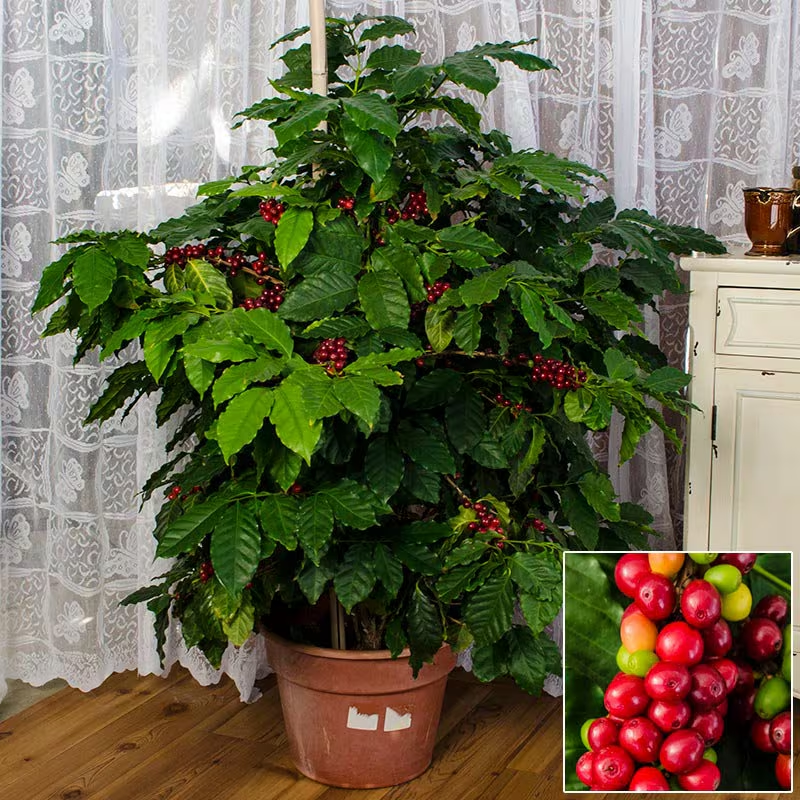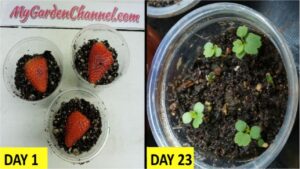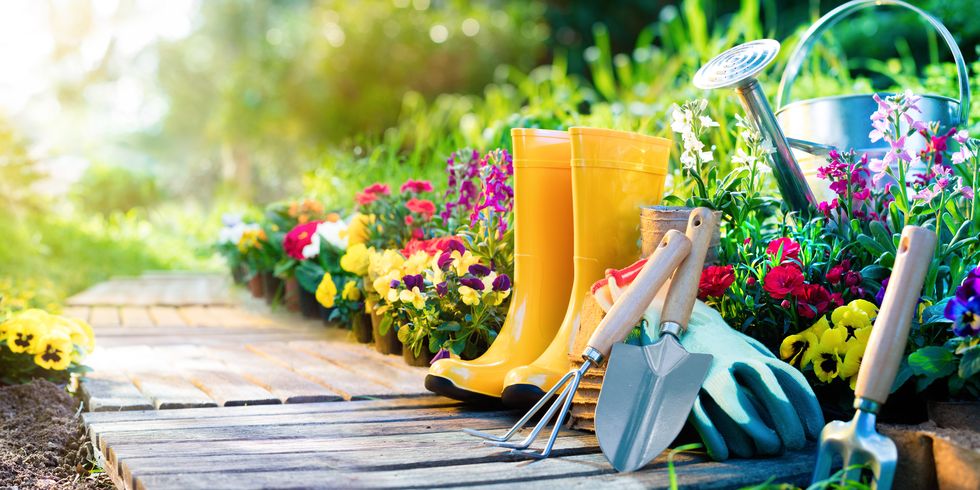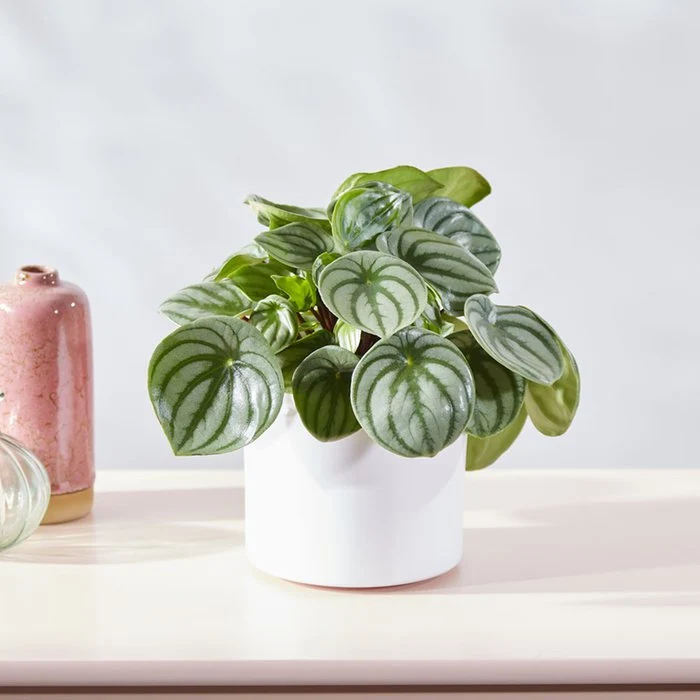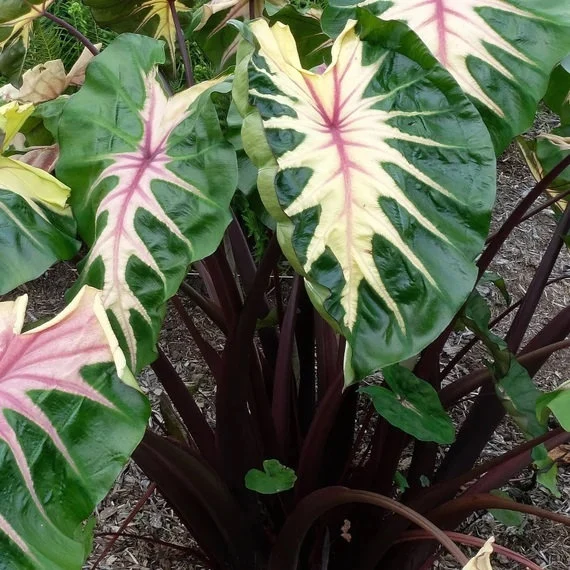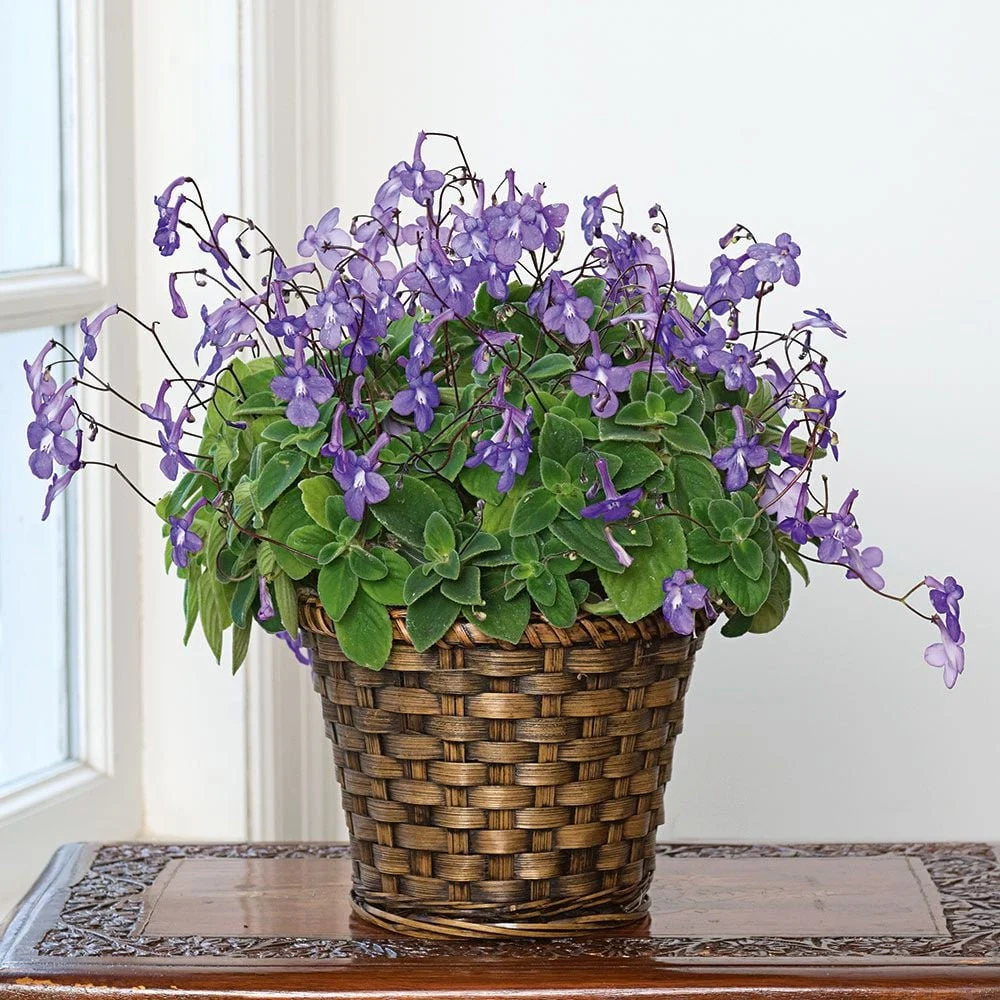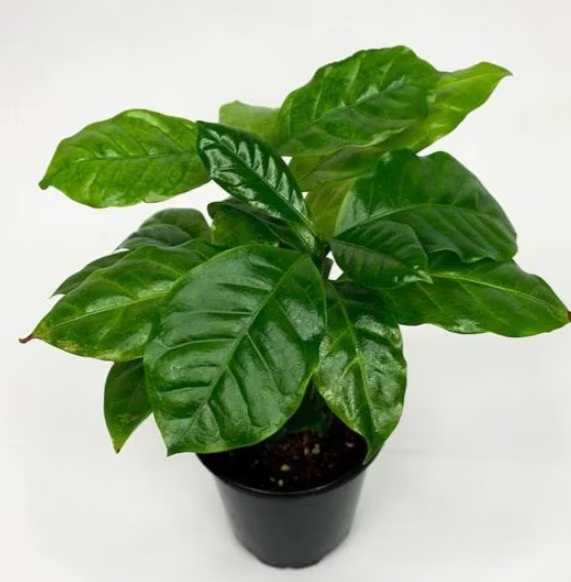
The Arabica coffee plant (Coffea arabica) is a popular houseplant known for its glossy green leaves and potential to produce fragrant white flowers followed by coffee beans. Native to Ethiopia and Yemen, Arabica coffee thrives in warm, humid conditions. Whether you’re growing it indoors as a decorative plant or cultivating it for its beans, proper care is essential. This detailed guide covers all aspects of growing and maintaining a healthy Arabica coffee plant.
1. Understanding the Arabica Coffee Plant
Arabica coffee is a tropical evergreen shrub that can grow up to 15 feet tall in the wild but is often pruned to a manageable height when grown indoors. It is known for its delicate white flowers, which give way to small, green berries that mature into red coffee cherries containing the beans.
Growth Characteristics
- Scientific Name: Coffea arabica
- Height: Up to 15 feet in nature, 3-6 feet indoors
- Lifespan: Can live up to 50 years with proper care
- Leaf Shape: Glossy, dark green, elliptical
- Flowers: Small, fragrant, white
- Fruit: Red cherries containing coffee beans
Climate and Hardiness
- USDA Zones: 9-11
- Temperature Range: Prefers 60-80°F (16-27°C)
- Humidity: High humidity required (50-80%)
- Sun Exposure: Bright, indirect light or partial shade
2. Planting and Soil Requirements
Proper planting techniques and soil selection play a crucial role in the success of an Arabica coffee plant.
Choosing the Right Soil
A mix of peat moss, perlite, and organic compost works well.
Well-draining, rich, and slightly acidic soil is ideal.
pH range should be between 5.5 and 6.5.
A mix of peat moss, perlite, and organic compost works well.
Potting and Repotting
- Choose a pot with drainage holes to prevent root rot.
- Repot every 2-3 years or when the plant outgrows its container.
- Use a slightly larger pot each time to encourage healthy root growth.
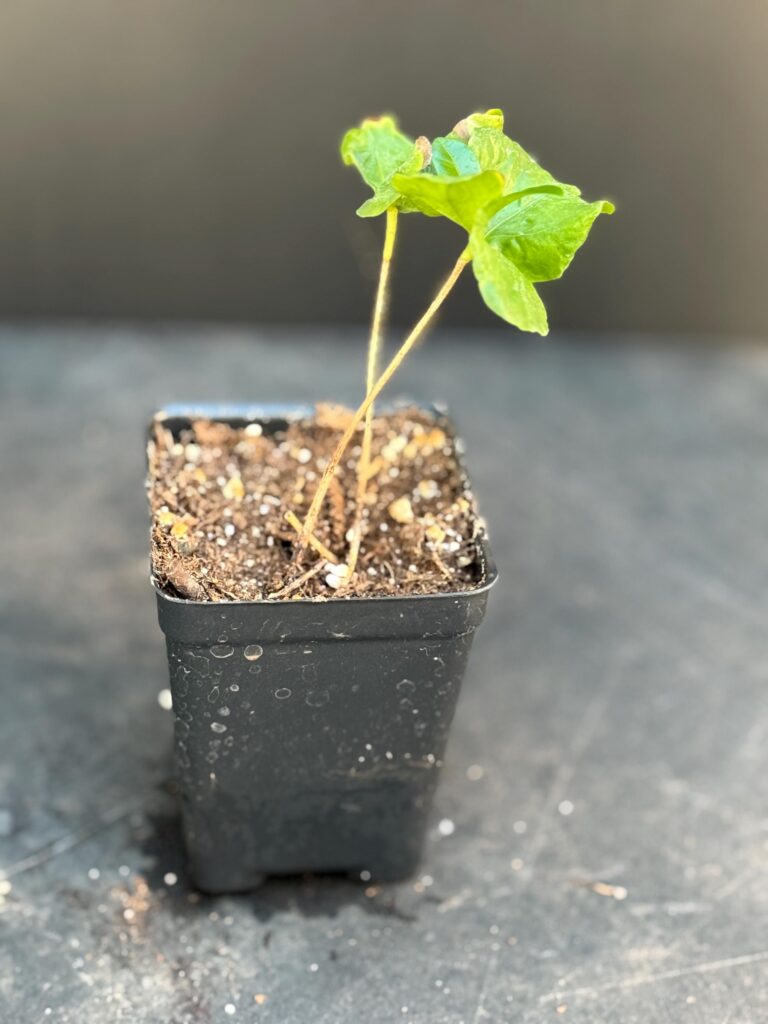
3. Light and Watering Requirements
Arabica coffee plants require a balance of light and moisture to thrive.
Sunlight Needs
- Prefers bright, indirect light or dappled shade.
- Direct sunlight can scorch the leaves, while too little light can stunt growth.
- Outdoor plants should be placed in partial shade.
Watering Schedule
- Keep the soil consistently moist but not soggy.
- Water once or twice a week, adjusting based on climate and humidity.
- Use filtered or rainwater if possible, as tap water may contain harmful minerals.
4. Fertilization and Nutrient Requirements
Feeding your coffee plant with the right nutrients ensures healthy growth and flowering.
Best Fertilizer Choices
- Use a balanced fertilizer (10-10-10) during the growing season.
- Organic options like compost tea or worm castings improve soil health.
Feeding Schedule
- Fertilize every 2-4 weeks from spring to fall.
- Reduce feeding in winter when plant growth slows.
5. Pruning and Maintenance
Regular pruning helps maintain the plant’s shape and promotes better air circulation.
When and How to Prune
- Prune in early spring before new growth appears.
- Remove dead or yellowing leaves to prevent disease.
- Trim the top branches to control height and encourage bushier growth.
6. Propagation Methods
Arabica coffee can be propagated through seeds or cuttings.
Growing from Seeds
- Use fresh coffee cherries and extract the beans.
- Soak beans in water for 24 hours before planting.
- Sow seeds 1 inch deep in moist soil and keep in a warm, humid environment.
- Germination takes 2-6 months.
Growing from Cuttings
- Take a 6-inch cutting from a healthy stem.
- Dip in rooting hormone and plant in moist soil.
- Keep in a warm, humid place until roots develop.
7. Pest and Disease Management
Though relatively hardy, Arabica coffee plants can be affected by pests and diseases.
Common Pests
- Aphids: Small insects that suck sap; treat with neem oil.
- Spider Mites: Cause yellowing leaves; increase humidity to deter them.
- Mealybugs: White cotton-like pests; remove manually or use insecticidal soap.
Common Diseases
- Leaf Spot: Brown spots on leaves due to fungal infection; avoid overhead watering.
- Root Rot: Caused by overwatering; ensure proper drainage.
- Rust: Orange spots on leaves; treat with a copper-based fungicide.
8. Flowering and Fruit Production
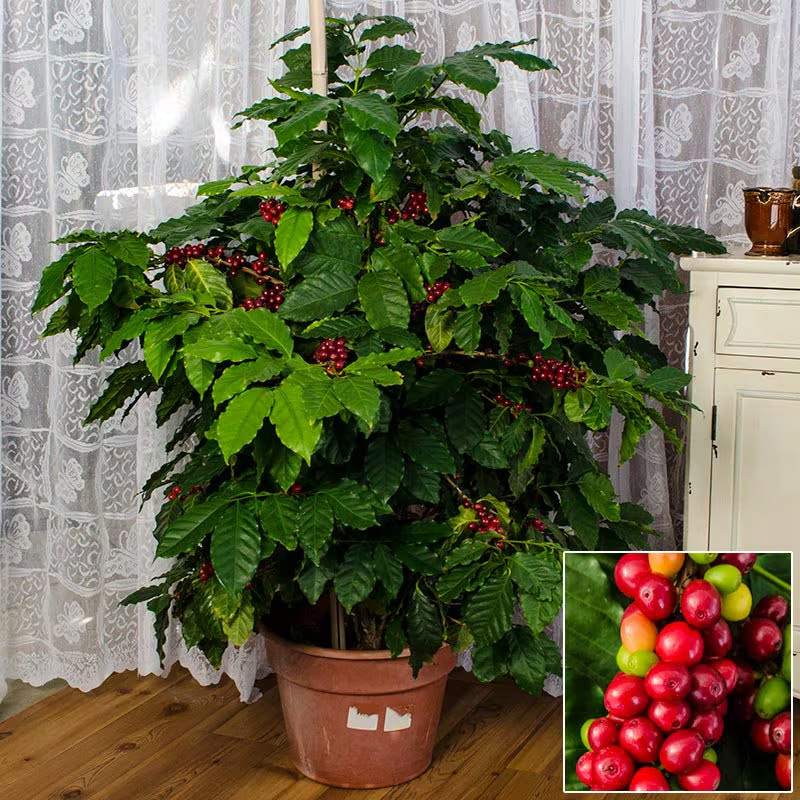
With the right care, Arabica coffee plants can bloom and produce coffee cherries.
Encouraging Flowering
- Ensure the plant receives consistent warmth and humidity.
- Reduce watering slightly in winter to mimic a natural dry season.
- Plants typically flower after 3-4 years.
Harvesting Coffee Cherries
Pick cherries and extract beans for drying and roasting.
Cherries turn red when fully ripe (usually 6-8 months after flowering).
9. Winter Care and Overwintering
During colder months, special attention is needed to keep the plant healthy.
Indoor Winter Care
- Keep in a warm, humid room, away from drafts.
- Reduce watering but do not let the soil dry out completely.
Outdoor Winter Protection
- Bring potted plants indoors if temperatures drop below 50°F (10°C).
- Mulch around outdoor plants to insulate roots.
10. Companion Plants and Landscaping Uses
Arabica coffee can be paired with other tropical plants for a lush garden aesthetic.
Companion Plants
- Ferns: Provide shade and moisture.
- Banana Plants: Create a tropical feel and increase humidity.
- Orchids: Thrive in similar conditions.
Landscaping Ideas
- Indoor Decorative Plant: Adds greenery to living spaces.
- Outdoor Shade Garden: Complements other shade-loving plants.
- Greenhouse Cultivation: Ideal for controlled environments.

